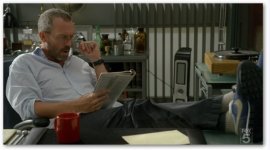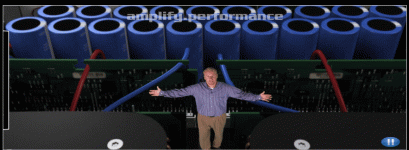As long as sharpening down a 15 cent Home Depot screw does the same trick. Corner horns not sounding right when moved out of the corner is probably not the best example.
OK, I have it.
15 Cents you cheap .... A good brass screw in quantity costs more than that! The Home Depot brass screws I tried looked like a brass alloy but were only slightly stronger than cheddar cheese! Really! Brass should be 80% as strong as steel! (The alloys used for screw machine products) So cheaping out doesn't get you there! Spend at least a quarter. After that the extra money is for cosmetics or very limited production of a slightly better variant.
Corner horns are a clear example. Any speaker moving will change how the sound reaches the listeners ears.
Mr Simon,
so how would you build a phono stage ?
[ Mr Gerhard : http://pic4.audiogon.com/i/c/f/1301432232.jpg TNT turntable plus Eminent Technology tonearm. Indecent Proposal, Robert Redford and Gimme Moore. Richard Gere was the one who threw his entire mediocre stereo set out of the closet in American Gigolo. I fancy Deuce Bigalow more, minus the ceiling workout scene ]
so how would you build a phono stage ?
[ Mr Gerhard : http://pic4.audiogon.com/i/c/f/1301432232.jpg TNT turntable plus Eminent Technology tonearm. Indecent Proposal, Robert Redford and Gimme Moore. Richard Gere was the one who threw his entire mediocre stereo set out of the closet in American Gigolo. I fancy Deuce Bigalow more, minus the ceiling workout scene ]
Mr Simon,
so how would you build a phono stage ?
[ Mr Gerhard : http://pic4.audiogon.com/i/c/f/1301432232.jpg TNT turntable plus Eminent Technology tonearm. Indecent Proposal, Robert Redford and Gimme Moore. Richard Gere was the one who threw his entire mediocre stereo set out of the closet in American Gigolo. I fancy Deuce Bigalow more, minus the ceiling workout scene ]
Not there yet. I don't need to either. Enough folks use my work in theirs that they are more than happy to return the favor. So far there are two areas of high end audio design that seem to have changed as a result of my published work.
But if I build a phono stage I do know where to use Dale CMF55 resistors or Naked Vishays and a bit more than the average designer how to build the power supply. Of course I will continue to use active shields on the interconnects with low distortion connectors.
I do need to add to my capacitor tests. But right now I am trying to finish up on contact issues. Next I plan a simple article shedding light on the dark side of feedback!
Hi,
Actually make mine Tomb Raider...
Lara Croft has an awsome listening room (hall of her castle) and a Klirraudio (sorry, german in-joke) turntable with some tube Amp's (and likely Tannoy Westminster Royal speakers - as english aristocrat) on top of her pert bum and being ever so easy on the eye... 😛
[Edit - I forgot to mention her Wine Cellar and Sports Car collection...]
A gal right down my alley.
Ciao T
Indecent Proposal, Robert Redford and Gimme Moore. Richard Gere was the one who threw his entire mediocre stereo set out of the closet in American Gigolo. I fancy Deuce Bigalow more, minus the ceiling workout scene ]
Actually make mine Tomb Raider...
Lara Croft has an awsome listening room (hall of her castle) and a Klirraudio (sorry, german in-joke) turntable with some tube Amp's (and likely Tannoy Westminster Royal speakers - as english aristocrat) on top of her pert bum and being ever so easy on the eye... 😛
[Edit - I forgot to mention her Wine Cellar and Sports Car collection...]
A gal right down my alley.
Ciao T
Last edited:
Revenge Is Best Served Up Cold....
When techs were on night duty, one of their jobs was to sneak into the bosses office (using an unauthorised key) and tweak one of the paintings in the room a few degrees.
Everyday when the boss came into his office he would notice a painting askew....nearly drove him mad, but the rest of the staff had a great laugh.
Simon, you sure that you are treating your staff right ?.
Eric.
Reminds me of a story told to me......my father worked as tech for local commercial radio station that had a proper ahole perfectionist for station boss.As a simple example, in my office are corner horn loudspeakers. Not surprisingly they slowly move out of the corners. Either it is poltergeist, the very rare cleaning, or vibration induced movement. When spiked feet are used they either have stopped moving, can be repositioned after cleaning by feel into the floor dents, or the sharp points scare off poltergeist. Please choose whichever explanation you prefer. But the result is proper placement in the corner has a very large effect on the way the loudspeaker performs.
When techs were on night duty, one of their jobs was to sneak into the bosses office (using an unauthorised key) and tweak one of the paintings in the room a few degrees.
Everyday when the boss came into his office he would notice a painting askew....nearly drove him mad, but the rest of the staff had a great laugh.
Simon, you sure that you are treating your staff right ?.
Eric.
The stiffer the construction of the capacitor the lower the noise.
Side note : i ran across plenty of papers on FEA modelling for electronic components, including a few for thermal behavior of film capacitors. Interestingly, yet to find one on vibration modelling for a foil cap.
[Speaking of Marty Feldman look-eye-likes : Steve Buscemi, Ghost World, Thora Birch.
More phonophile passion, less turntable, but also less silicone & botox]
Attachments
Corner horns are a clear example. Any speaker moving will change how the sound reaches the listeners ears.
Yes but moving a corner horn out of the corner is a liittle more like taking it appart rather than just moving it.
Yes but moving a corner horn out of the corner is a liittle more like taking it appart rather than just moving it.
In very large sound systems multiple drivers are used both to get the sound pressure level required along with covering the audience area. One of the secrets to getting them to play nice in a large group is to be sure that the arrival time of the signal to all the drivers stays exactly as designed.
The popularity of using the ethernet to distribute audio signals makes this quite difficult. The manufacturers of such devices have met their design goals to make such arrival times as accurate as their users believe is required.
We have to be very careful in assigning processors to arrays to get close to what I and my associates consider adequate. Some here understand the timing issues raised. A millisecond of accuracy of course is completely inadequate, even though that corresponds to about a one foot position error.
So even moving a home loudspeaker less than an inch from close reflecting surfaces should produce changes that will be perceived by a reasonably experienced observer.
The humor of this is that the observant will realize that it is more than just signal timing, but also structural requirements to ensure the level of precision required. Then the operators will move the speaker clusters to clear the space for an incoming show's rigging and put them back kind of where they figured they were!
What means "using the ethernet to distribute audio signals" ? Do you mean wireless transmission ?
Ethernet audio distribution is common in complex and big reinforcement. First success was the CobraNet.
Check the purple area connector on the back of this Crown touring grade amp.
See the tests that are run on serious pro amps by the way Crown Itech. The transistors matching robot vid is one not to miss amongst those.
Check the purple area connector on the back of this Crown touring grade amp.
See the tests that are run on serious pro amps by the way Crown Itech. The transistors matching robot vid is one not to miss amongst those.
Attachments
Feels like they hired Matt Frewer for the factory world tour.
http://www.youtube.com/watch?v=NrjBNI-TDSk
http://www.youtube.com/watch?v=NrjBNI-TDSk
Ethernet audio distribution is common in complex and big reinforcement. First success was the CobraNet.
Check the purple area connector on the back of this Crown touring grade amp.
See the tests that are run on serious pro amps by the way Crown Itech. The transistors matching robot vid is one not to miss amongst those.
Thanks for the link.
I first met Scott P when I was doing the MCI Center in Washington DC. Rane had built their DSP following grounding advice from Bill Whitlock. The system hummed like crazy. A few measurements got sent to both manufacturers. Scott was great. He understood the issues. His solution was to use the connector case connection not the pin 1 as pin 1 was wired to ground through the PC cards and connectors so there would be more resistance. The Rane response was that they measured S/N from clipping and so thought I had 50 db S/N not the 30 I measured. The Ashly signal processors performed so much better even the construction managers heard the difference!
My first Crown amplifier control system was also fun. As it was one of their first they used the company plane to bring out a bunch of techs to solve the start up issues and provide the latest revision modifications to all of the power amplifiers. I later used all of their latest gear when I did the "Cove" the baseball park down the road from them.
Cobranet has changed quite a bit. It started as a single Ethernet port per device, now it requires two, one for data the other control. It also has sped up and the latency is much better. On my first Cobranet system the factory guy was surprised to find out we had it working before he got there. Even so he was just great at helping us get the most out of the entire system. His name also was Scott! (K not P though.)
My last arena (KFC YUM Center) also is Cobranet and Crown using the BSS DSP. It all works except for the Whirlwind Cobranet snake which it turns out isn't really used, just the architect's designer's idea of how to route signal.
But the issues of very precise timing of the final output signals is still a big issue. It is kind of scary that when I talk to some of the manufacturer's back room guys they don't quite grasp the issues!
So the conclusion is always ask for Scott in tech support! 🙂
ES
Balanced-Input Phono Preamps
Let's get this thread back on track by talking about phono preamps. Here is a multi-part question I would like to pose for discussion:
How beneficial is it to have balanced MC or MM phono inputs?
What percentage of reasonably high-end phono stages have balanced inputs?
What percentage of high-end turntables are equipped with balanced outputs?
Balanced is beautiful, but how extensive is its application here?
Cheers,
Bob
Let's get this thread back on track by talking about phono preamps. Here is a multi-part question I would like to pose for discussion:
How beneficial is it to have balanced MC or MM phono inputs?
What percentage of reasonably high-end phono stages have balanced inputs?
What percentage of high-end turntables are equipped with balanced outputs?
Balanced is beautiful, but how extensive is its application here?
Cheers,
Bob
Let's get this thread back on track by talking about phono preamps. Here is a multi-part question I would like to pose for discussion:
How beneficial is it to have balanced MC or MM phono inputs?
What percentage of reasonably high-end phono stages have balanced inputs?
What percentage of high-end turntables are equipped with balanced outputs?
Balanced is beautiful, but how extensive is its application here?
Cheers,
Bob
My tonearm had a 5 pin DIN connector so balanced was trivial to implement and I did find it to help reduce hum. I use a high output cart so the noise from the differential input preamp was not an issue. JC will remind you that with low output MC the 3dB noise hit probably can not be overcome so this would be an argument for differential phono not being universal. One could go on to conclude that since high end users are likely to use at one point a low output MC these products would not appeal to them.
100% of the MC preamps in my house are balanced in, SE out.
100% of the MM preamps in my house are balanced in, SE out.
I voted with my soldering iron.😀
100% of the MM preamps in my house are balanced in, SE out.
I voted with my soldering iron.😀
- Status
- Not open for further replies.
- Home
- Source & Line
- Analogue Source
- Parasound JC3 Phono



